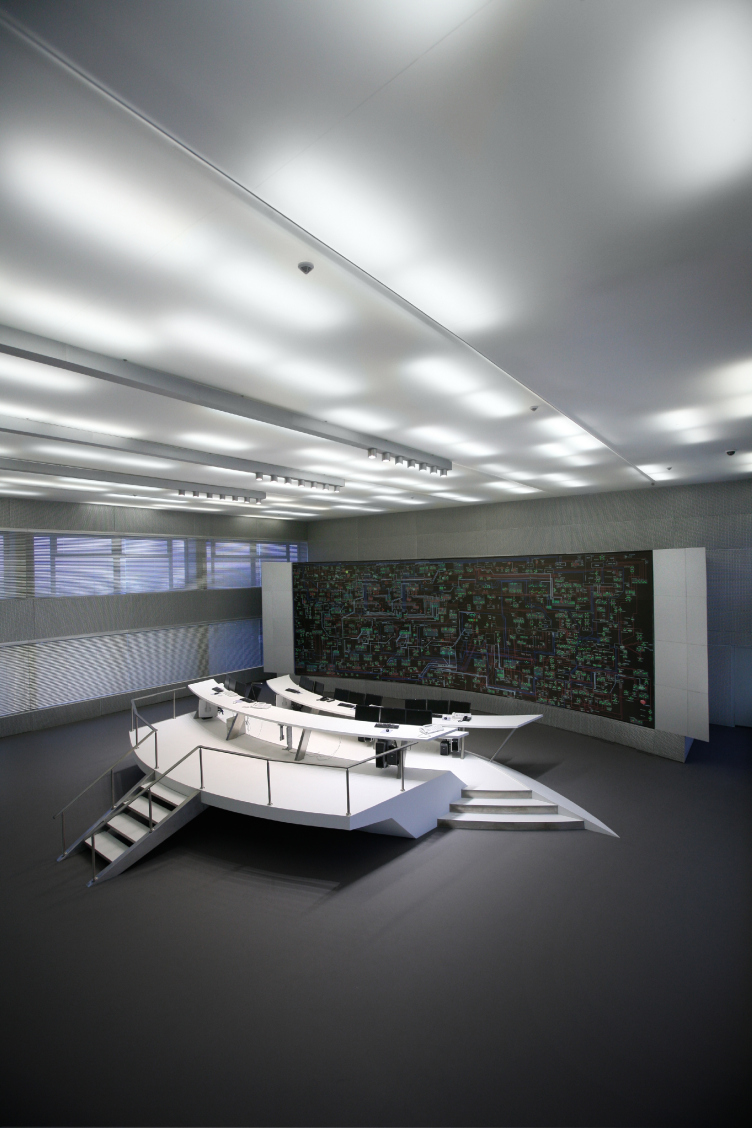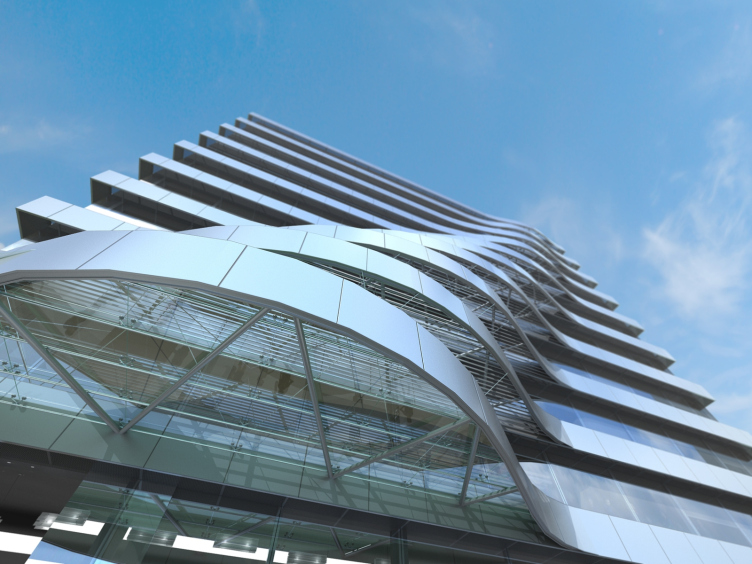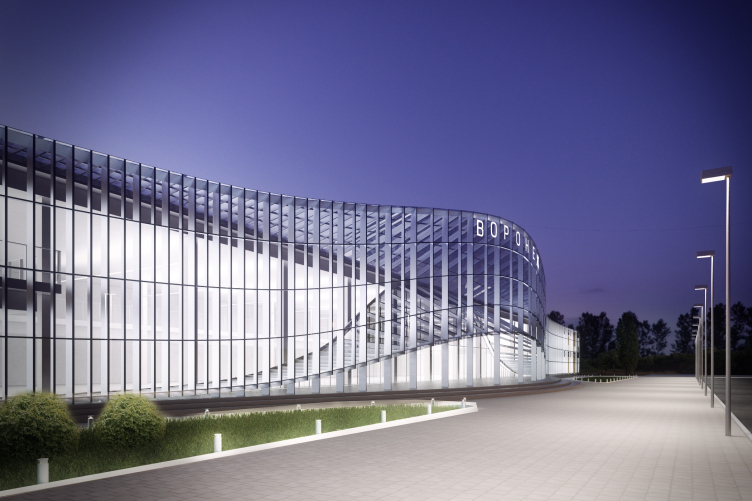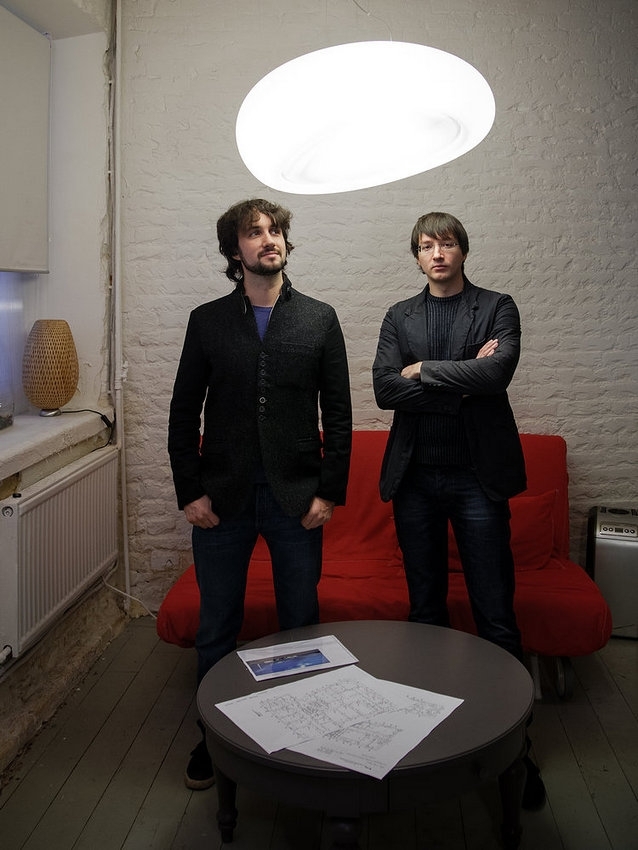
 |
Created in 2007 by Aleksey Goryainov and Mikhail Krymov, the architectural company "Arch Group" over the seven years of its existence has gained a reputation of a team with a huge creative potential. The recent Moscow contest inevitably had the company on their participant lists. And the company's works usually proved to be some of the best. We met the leaders of the company and spoke to them not only about their successful participation in the contests but also about their particular interest for reconstruction work.
Archi.ru:
- Reconstruction is one of the leading branches of your company's activity. How did you choose this branch and why is it interesting to you?
Mikhail Krymov:
- To me, architecture IS reconstruction. We create new things not in some sort of airless vacuum like our God did on his first day of creation: we mould things from the clay that's already there, and we change image of the world around us. All the tasks that we deal with are about reconstruction of this or that scale: from large-scale urbanist tasks of city reconstruction to the reconstruction of an apartment that some specific person lives in. When we create a new project we inevitably take into consideration the already existing buildings, and the environment, and the already-existing development scenarios, and earlier proposals, and a whole bunch of other factors. We choose what we need, at the same time singling out the potential possibilities using for this our set of architectural instruments. We are not so much demiurges as we are surgeons.
Aleksey Goryainov:
- Moscow looks like it solely consists of endless industrial parks. Like some sort of disease, they've crawled into every corner of the city. In the recent years, it has become evident that this problem is asking to be solved. The attempts of remodeling the industrial parks are already being made, and the appropriate tenders are held. However, thus huge work is only just beginning. About a third of Moscow's whole territory, let alone other cities, is in a desperate need of renovation. And this is really a full-scale task.
Mikhail Krymov:
- Besides the existing background factors, such as the presence of industrial parks that need to be remodeled, the subject of remodeling has been actualized by the very economic situation in this country. Our company actively clicked into the reconstruction mode when the financial crisis was in full swing, when it became obvious in 2008 that reconstructing an old building would be a lot more cost-efficient than taking it down and building a new one in its stead.
- What was your first reconstruction project?
A.G.: Our history began with the project of reconstructing an office building at the Nizhnyaya Krasnoselskaya Street for MOESK Company. By that moment, our company had already came up with and implemented the interior design of several floors that was several times awarded various prizes at various competitions. The sharp contrast between the content of the building and its rather bleak appearance practically forced our customer to give a thought to its reconstruction. We came up with quite sweet facades with the uneven "wave" of balconies and railings that concealed the air conditioning units hanging out on the outside. We liked our result because we came to understand the fact that at times reconstruction can produce an effect that is just as powerful as building from scratch.

 |
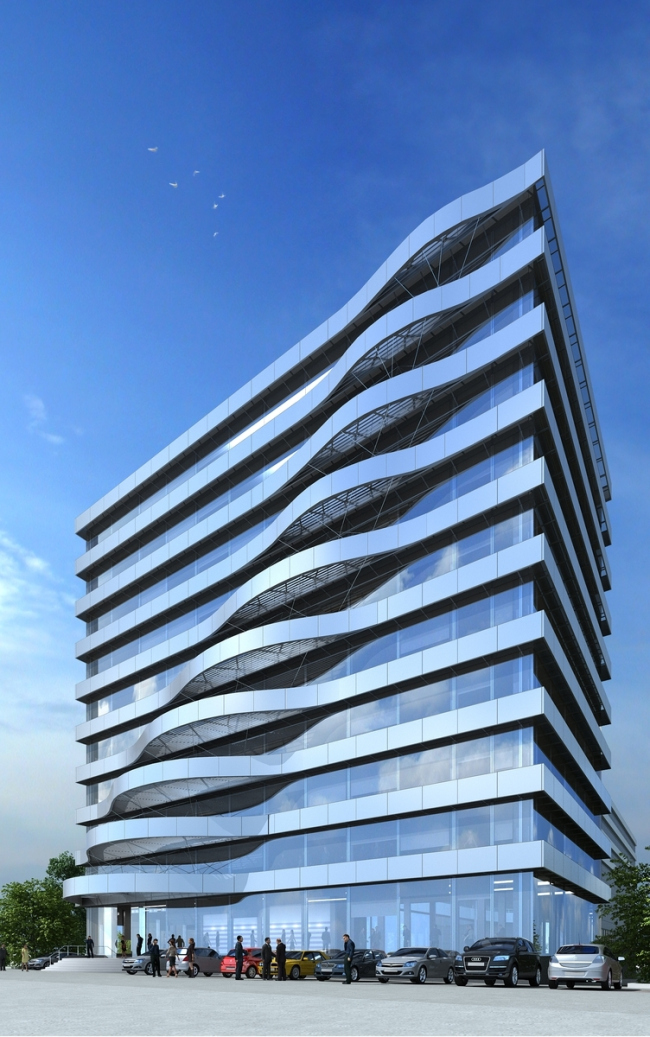
 |

 |
M.K.: And, besides, this approach was really cost-efficient. After that, a whole number of similar projects ensued: remodeling the facades of the "CenterTelecom" building, reconstruction of the facades of the office building at the Staroalekseevskaya Street, concept of the reconstruction of the industrial quarter at the Kalanchevskaya Street to become a business center...
After that, we came up with a rather daring concept of reconstructing a building at the Malaya Ordynka Street into a club complex of premium-class apartments. We took the existing house and clad it into panels, gave to it new console balconies and terraces on the outboard supports - thanks to which the building started looking like a fantastic super-car. If this project had been implemented, nobody would have ever guessed that it was a reconstruction. Basically, this is what our approach is all about.
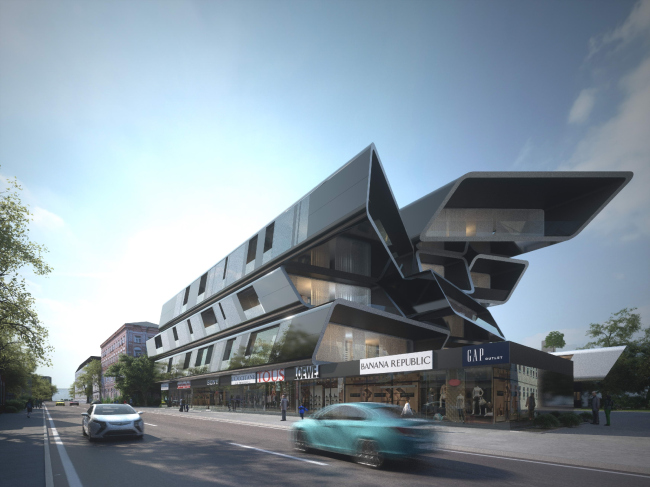
 |
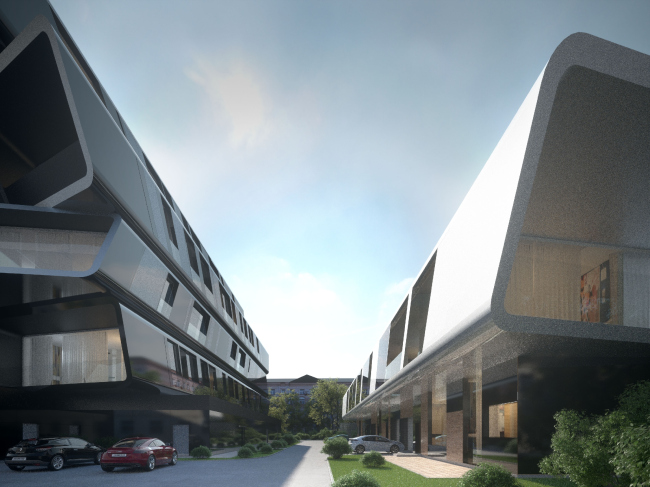
 |
- You started your story from sharing about Moscow industrial parks that are in need of reconstruction. Have you already had a chance to work on such projects?
A.G.: Yes, and more than once, too! One of the largest was the project of renovating the territory of the former chemical plant on the Berezhkovskaya Embankment. This was a closed tender that was held twice. The first time around, when it was planned to take down all the existing buildings, it was won by "Project Meganom". We took part in it when the tender was organized for the second time and it was planned not to demolish but to reconstruct the existing houses. And it was our proposal that took the first place.
This project was interesting to us not only in terms of the magnitude of the task - a huge territory, one owner, and almost total freedom of creation - but also in terms of this land being very important for this city. More than seventy factory buildings have stretched along the riverbed of the Moskva River, across from Moscow City complex. According to our customer, this territory might become something that's similar to today's "Vinzavod", only on a larger scale, and with expanded set of features.
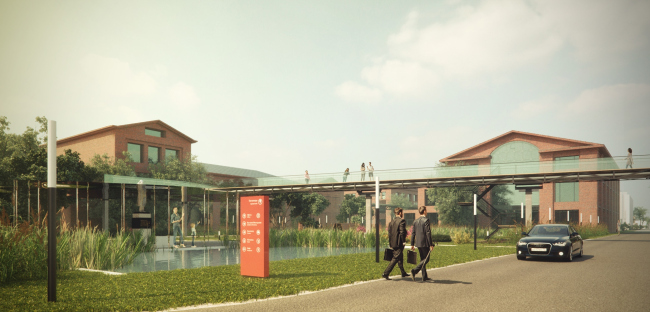
 |
M.K.: We came up with a functional program, dividing all the buildings into seven independent groups. For example, the beautiful red-brick buildings were turned into loft apartments; the large production buildings became shopping malls; the historically valuable buildings got the protected status and were turned into cultural and exhibition objects. For such zoning, we had to do a quite serious analysis of the territory.
Besides, it turned out that the very aesthetics of this place was very close to us, with all of its hanging bridges, and the backlit pedestrian trails that connect the buildings on the level of the second floor. The project also provides for the green part, its main axis being the broad car-free street.
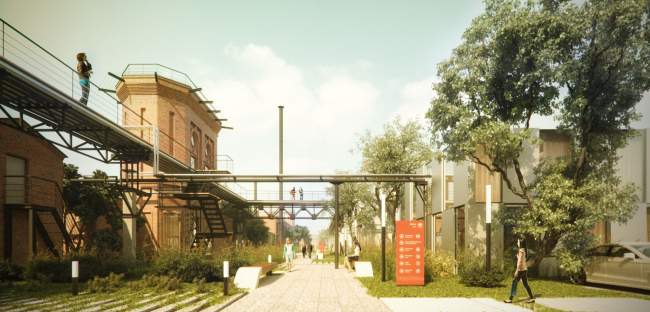
 |
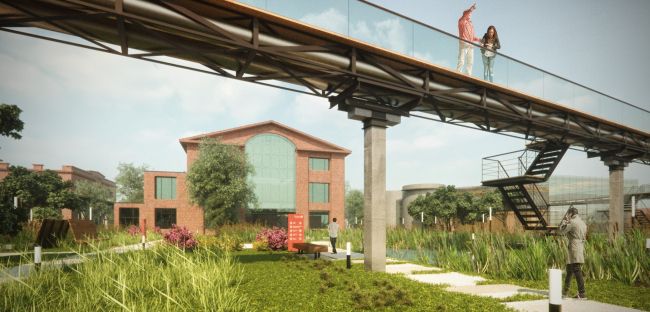
 |
- As far as I understand, reconstruction is still the leading branch of your company's activity. What are you working on presently?
M.K.: One of our last project is "Novoostapovsky" business center. We won the right to design it in a closed tender that the customer organized. The task was to turn an elongated two-floor production building that stretches along the Sharikopodshipnikovaya Street into a modern office center. The task was complicated by the fact that the customer only owned half of the building, and the other half was to be left intact. The way I see it, we came up with an interesting proposal: refraining from continuing the horizontal theme we broke the building up into a series of vertical volumes. This "montage" of differently designed fragments symbolizes the diverse urban environment with closely standing facades that are decorated with different materials and look different from one another in terms of height and in terms of their recession from the building line. Thus, instead of but one extremely long building, there appeared a whole busy and lively street. Behind the different facades there are offices and little shop that this neighborhood had badly missed until then. And, more importantly, the place became human-proportionate.
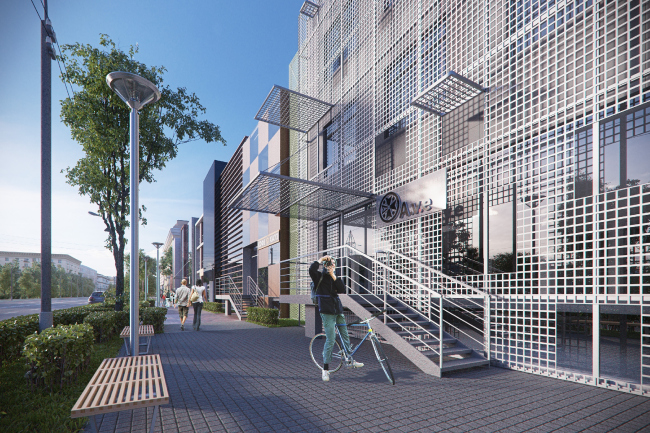
© Arch group |
 |
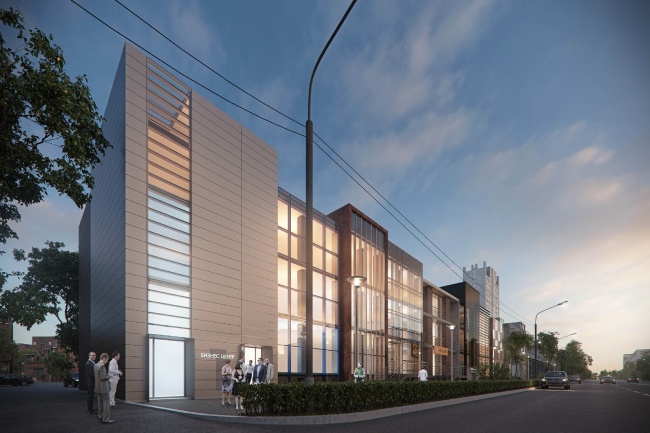
© Arch group |
 |
Yet another similar project that we also got through a closed tender was the redevelopment project of A.S. Popov radio factory in the city of Omsk. Its main difference from the previous one consisted in the fact that here we needed to reconstruct the still-functioning, and, in effect, the local economic mainstay: the three buildings of different height with no common facade. One of them was the checkpoint building, another - a round panel unit, and the third one - a traditional brick building. However, as opposed to the previous project, in this case we thought it right to do a single facade for all the three volumes. We decided to unite buildings adding a passage between them. And the common motif was the image of some mysterious radio device: the walls of the main facade of smoked glass bear the pattern that symbolically repeats the complex spectrogram of the radio waves.
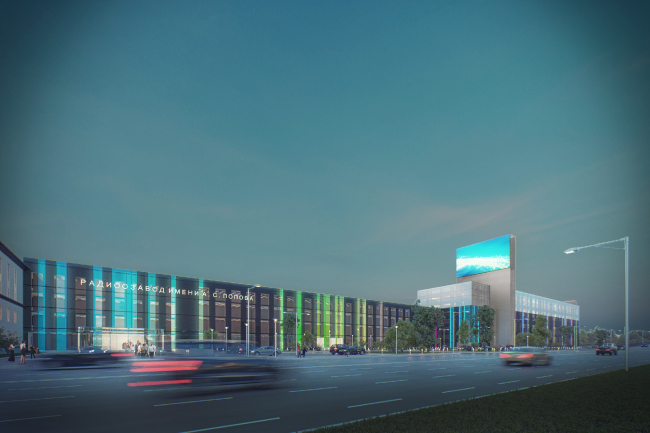
 |
Besides, we saved fragments of the Soviet architecture here. The most important and interesting-looking parts are encased in special casings of metal grille. Such a device lets us keep the memory of how the building looked like before the reconstruction. Backlit from inside, these parts turn into some sort of sculptures that remind us of the factory's past.
- Your portfolio has in it a specially dedicated block of reconstructing airports. How are you getting along with that?
A.G.: We did a few projects of reconstructing the airports of a few major Russian cities. Generally, these are the rank-and-file soviet affairs with old panel facades. In all the cases it was supposed to leave but the framework of the building, upon the basis of which different facades could be created. At some places, the airport took on the modern features, and at some places, like in the city of Abakan, for example, the facade was designed with consideration of the regional ornamental tradition.
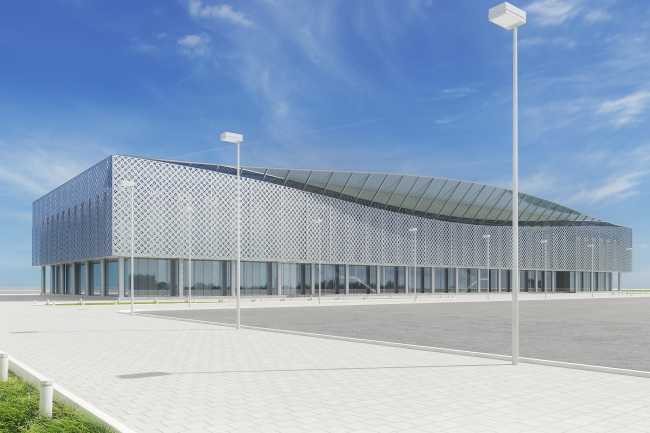
 |
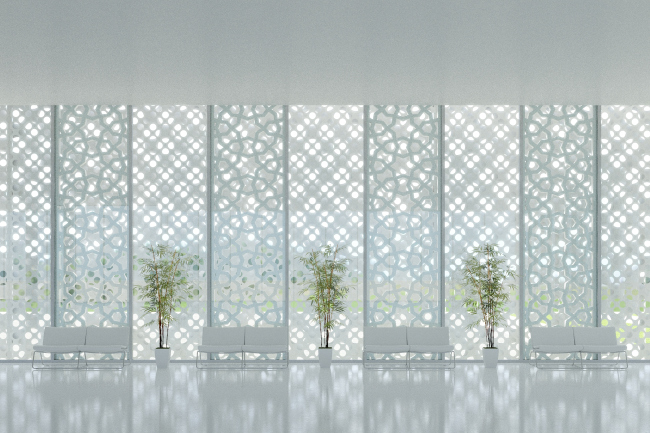
 |
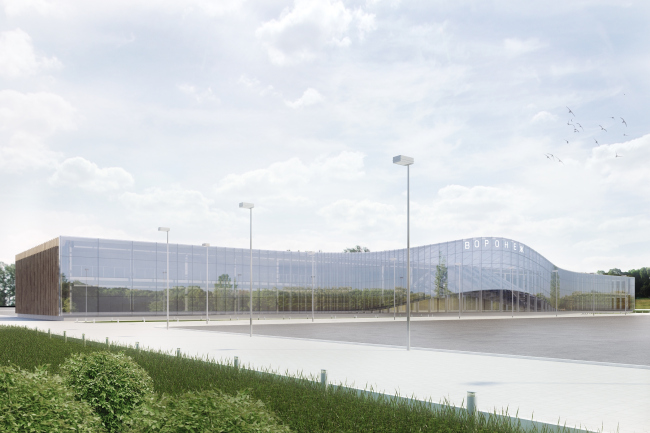
 |

 |
- And the reconstruction of the facades of the medical centers for children?
A.G.: As far as the medical centers are concerned, it was the city's initiative to renovate them. And I think it was really the right thing to do. When this idea gained momentum, we made a few proposals that could turn the bleak and sometimes even scary panel affairs into bright and vivacious-looking buildings. However, this idea was to remain on paper: the city's initiative was shut down as unexpectedly as it had appeared.
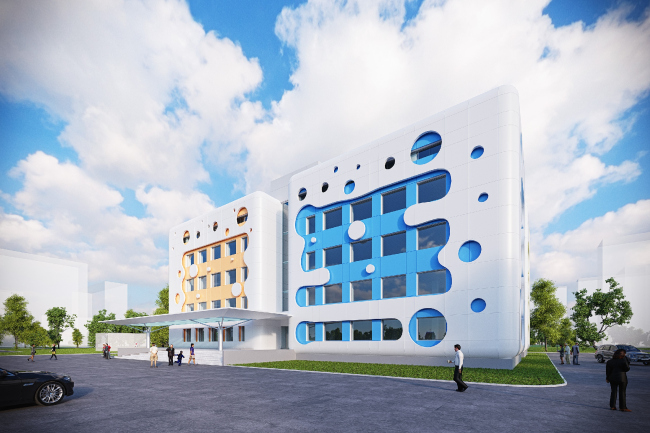
 |
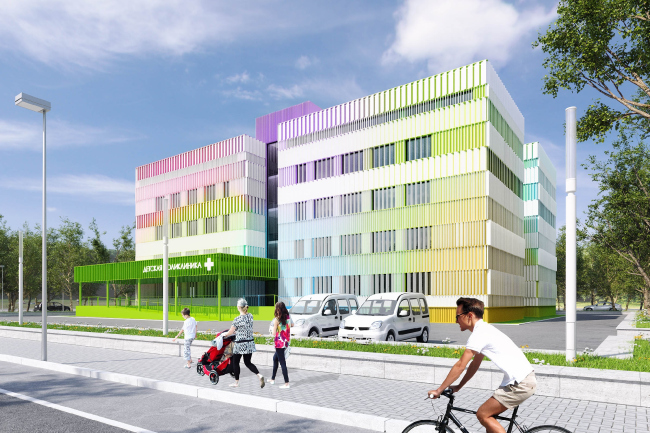
 |
- You mentioned your participation in closed tenders. Do you like participating in closed or in open ones?
M.K.: As a matter of fact, yes, we like closed tenders more. And it's not about the number of participants that we have to compete with but about the very approach to evaluating the contest projects. In a closed tender the works are considered directly by the customer that first of all pays attention to their conforming to the specifications, cost efficiency, and plain common sense. In open contests, the judging panel's choice is often conditioned by their momentary impression from the effective manner of presentation or even a random emotion, and this method of evaluation simply cannot be objective. Winning in such a contest is really difficult, so we rather view such contest as a chance to stretch out gray cells.
- Yet you still actively participate in open contests, including those that have to do with reconstruction. For example, recently the works of your studio were mentioned in the contests for the reconstruction of Luzhniki swimming complex and the Cheremushki bakery...
M.K.: The swimming complex of Luzhniki is not quite a reconstruction because, according to the specifications, the existing building is completely taken down, including its foundations. However, it is planned that three walls of the complex will be completely recreated, while the fourth one, the one that faces the "Metro-Bridge" and the road junction became the subject of design.
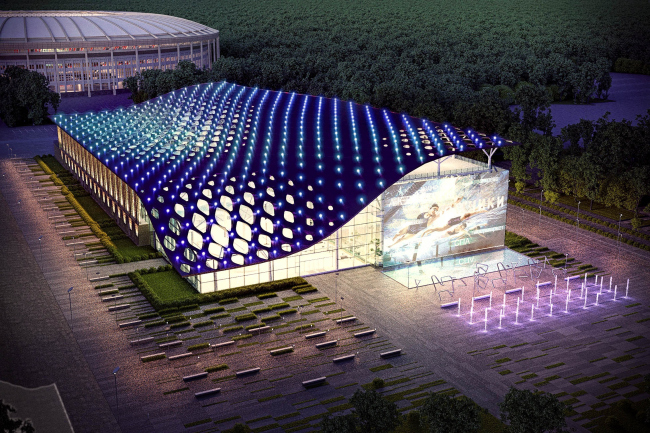
 |
A.G.: Luzhniki is the complex that was built back in the soviet time a single architectural ensemble. The building of the complex is perfectly viewable from the bridge but it is almost absent in the panorama of the city. We completely hid its volume, lowering the roof in a beautiful curve so as to make the main arena of Luzhniki viewable from the city. And we thought out in detail the fifth facade of the swimming complex, the one that is turned to the "Metro-Bridge".
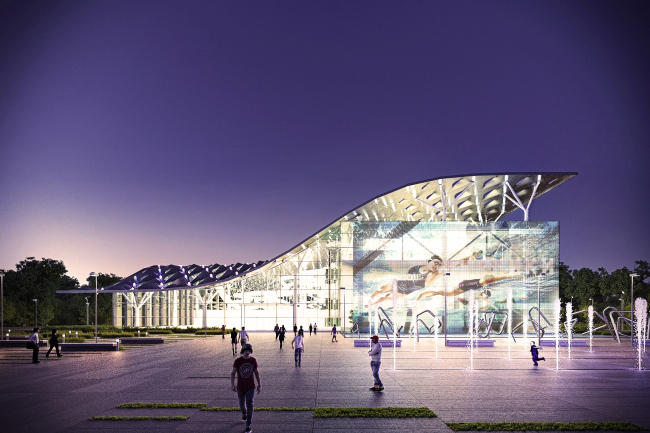
 |
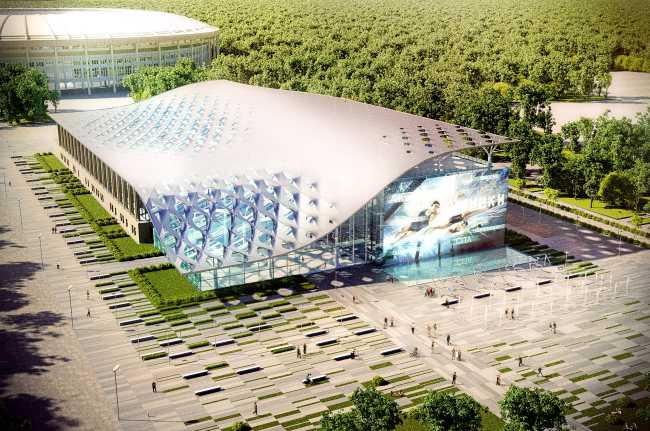
 |
M.K.: The project was thought out really well, down to the engineering communications and the water system. We must have overdid it here - because in an open tender it is the overall impression that matters, and details are secondary. We came up with a project that provided for every detail of the specifications and proposed simple and comprehensible solutions. And we took the third place but it was an exciting experience.
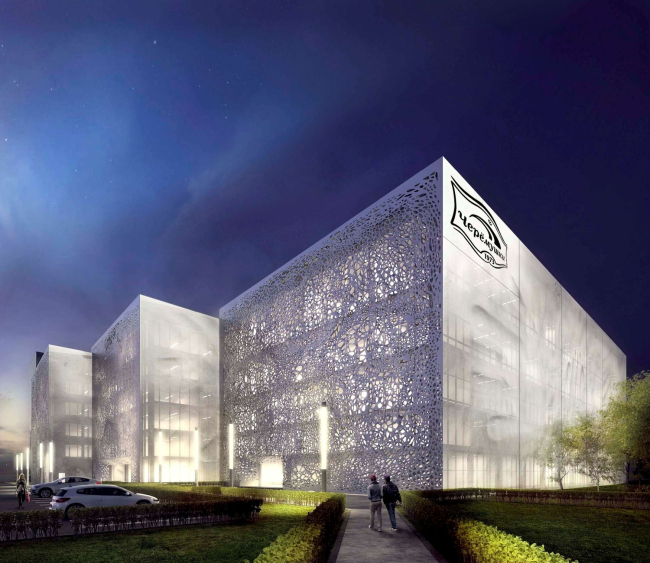
 |
A.G.: In the contest of the reconstruction of the Cheremushki Bakery, we were required to take several independent factory buildings of a complex configuration and a huge facade area - and design them as a single ensemble. One elongated facade was to form a street with active pedestrian and traffic flows. The other was meant to be viewable from a distance - meaning it was supposed to sport a dramatic image that could be easily red from a distance.
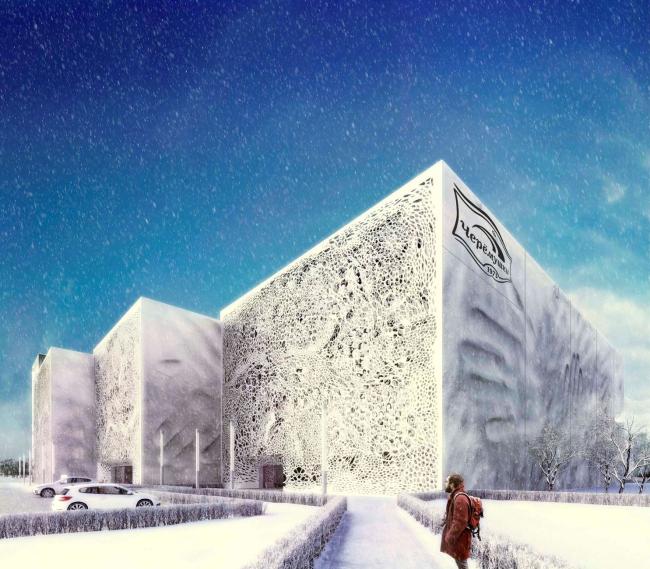
 |
M.K.: We came up with a solution how to combine a dramatic image with a possibility of its simple and cost-effective implementation. For the decoration, we proposed to use the facade grid with prints of human hands on it - as if the walls were just molded from soft pastry. This would bring up direct association with the factory's activity. This is the inner facade. The street facade looks a bit more complex. Upon it, the dramatically backlit two-layer wall really looks like a slice of freshly baked bread.
A.G.: Our work made it into the final but we did but we did not win the contest in the king run. As we learned from the interview of Julius Borisov who was one of the judges, the customer questioned the dependability of the decoration material that we chose. It sure is a pity... Incidentally, it was this specific net material that was used to build the Germany's exhibition pavilion for EXPO-2010 that gracefully survived the fair withstanding millions of guests.
- There was yet another contest - the project of reconstructing the marquee of Ukraine Hotel.
A.G.: This one was, probably, the must unusual of our reconstructions. We were not particularly keen on taking part in that contest but when we came up with a designing idea for the marquee that was really unexpected, we could not but go ahead. The thing is that this hotel needs this marquee solely to provide protection from the rain. On the other have, it is obvious that any marquee will simply block out part of the facade and ruin the image of this unique architectural monument. Therefore, the one and only right solution was to make a marquee that would not be there. This is how we came up with an invisible marquee that works by analogy with "air screens" that just cut off the cold air. The horizontal air screen blows the raindrops into the snow six meters away from the entrance, in there direction where there is no pedestrian flow. The marque is only on when it rains, and the air pressure depends on the intensity of the rain.
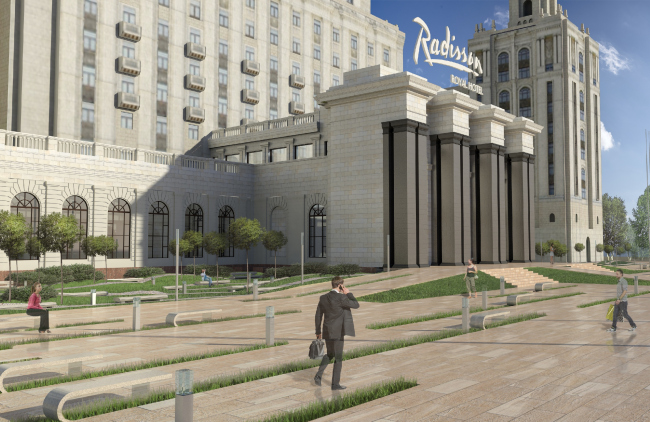
 |
M.K.: At the first stage of the contest, we presented our project as the overall idea and we were told that the customer had doubts about the implementability and the cost efficiency of this idea. As a result, by the time the second round started, we, together with the German company Arup calculated every tiny detail of it. Our calculations were so minute that they not only demonstrated the operating process but also provided for the trajectories of the motion of the blown raindrops, as well as their speed. We found the room to place all the necessary machinery, provided the annual report of precipitation in Moscow, calculated the costs of implementation and operation that was about ten times less than the construction of any, even the simplest, solid marquee... Nevertheless, our project did not win. No regrets, though: we were not interested in becoming the authors of just any marquee, and as for the interesting solution, we became the authors of one anyway. Strange, but there are no such marquees anywhere in the world!
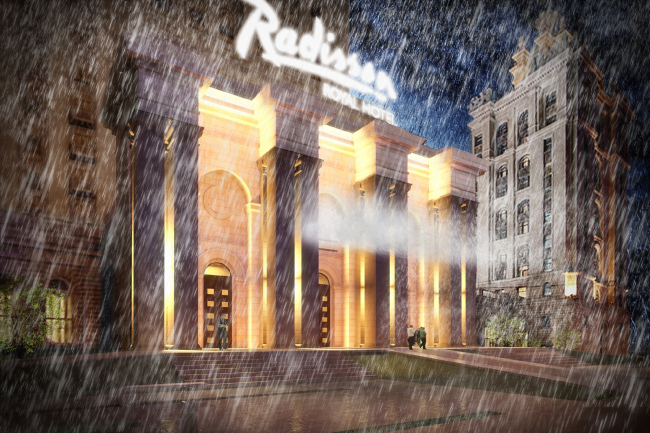
 |
- And have their been any open tenders that you've won?
A.G.: We won the international tender for the construction of the Russian Cultural Orthodox Church center in Paris. Our proposal consisted in preserving and reconstructing the existing buildings and then covering them with a single glass casing, like a single complex. The glass volume would even include the white-stone temple, which, with a certain share of irony, could be called "reconstruction of Orthodox Church architecture". However, even winning the tender does not guarantee you the implementation of your project. And this contest was no exception. Now this commission is handled by a different company in Paris.
- What is the most exciting thing for you about reconstruction? Do you feel maybe cramped up within the confines of this branch?
M.K.: Of course, our company does more than just reconstruction. At the initial stage, however, for such a young team as we were, reconstruction gave us a great opportunity to do architecture before we gained professional momentum.
A.G.: As a rule, we only work with the framework of the building which does not really limit our architectural possibilities - simply because the architect has to meet the volume restriction even when he comes to an empty land plot. Reconstruction has a lot of pluses to it - for example, it allows to estimate the scale of the building at once, and, besides, the implementation of reconstruction projects takes place a lot sooner than the construction of new objects which can sometimes stretch for decades, as a result of which the architecture of the project can grow obsolete.
M.K.: Architecture is the creative type of workmanship. The main rewards for the architect is seeing how the world changed with his efforts. Creating something new is great but changing the world around you with your own hands is quite a different story. This is a special architectural kind of magic.




